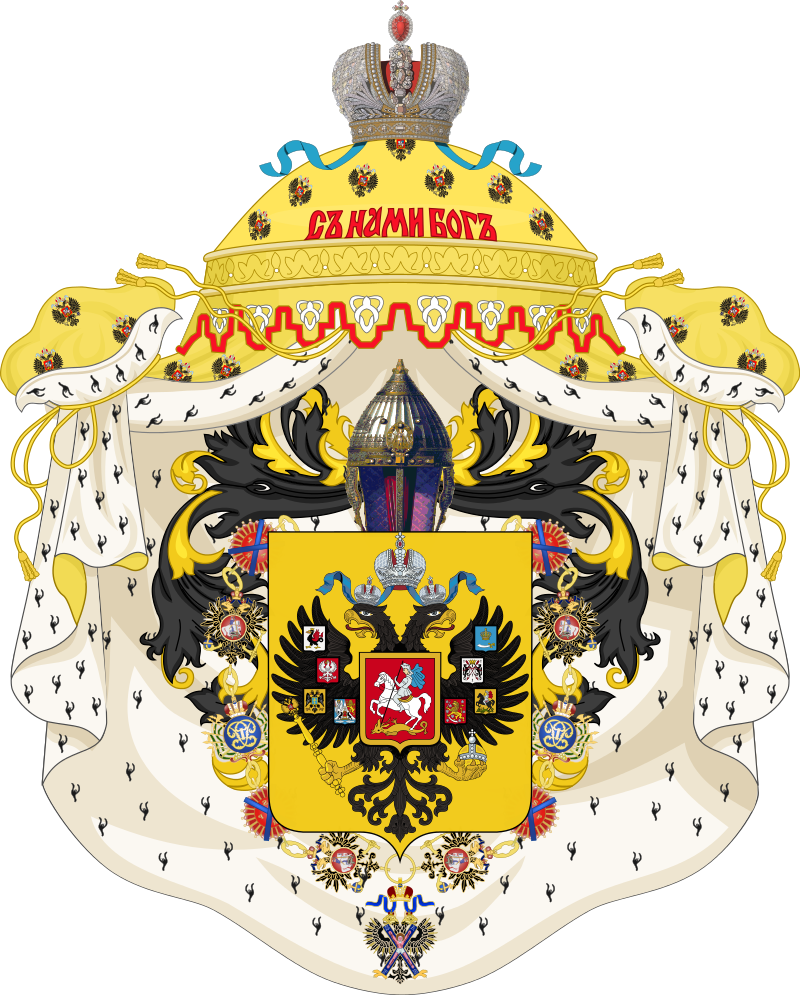 European ruling families
European ruling families
 European ruling families
Romanow
European ruling families
Romanow
 European ruling families
Habsburg
European ruling families
Habsburg
 European ruling families
Hohenzollern
European ruling families
Hohenzollern
 European ruling families
Windsor
European ruling families
Windsor

 Royalty
Royalty

ロマノフ朝(ロマノフちょう、1613年 - 1917年)は、1613年から1917年までロシアに君臨したロシアの歴史上最後の王朝である。1613年にロマノフ家のミハイル・ロマノフがロシア・ツァーリ国のツァーリに即位して成立した。その後1721年にピョートル1世がインペラトールを名乗り体制をロシア帝国に改め西欧化を推進し、1917年にロシア革命で滅亡した。
政体はロシア・ツァーリ国とロシア帝国に分かれ、首都はモスクワからサンクトペテルブルク(ペトログラード)に遷っている。また王家はロマノフ家からドイツ貴族のホルシュタイン=ゴットルプ家に男系が移っており、ピョートル3世以降はホルシュタイン=ゴットルプ=ロマノフ王朝と呼ぶのが正しい(後述)。
このように歴史学上では区分されるが、1913年に「ロマノフ王朝300年祭」が挙行されるなど、ミハイル・ロマノフからニコライ2世まで連綿と続いた王朝であるという認識を当時の人々は持っていた(ハプスブルク家とハプスブルク・ロートリンゲン家、ハノーバー朝とウィンザー朝参照)。現在でも単に「ロマノフ朝」といえば「ミハイル・ロマノフからニコライ2世まで連綿と続いたロシアの王朝」と指すのが一般的である。
The House of Romanov (/ˈroʊməˌnɔːf, -ˌnɒf, roʊˈmɑːnəf/;[1] also Romanoff;[1] Russian: Рома́новы, Románovy, IPA: [rɐˈmanəf]) was the reigning royal house of Russia from 1613 to 1917.
The Romanovs achieved prominence as boyars of the Grand Duchy of Moscow and later the Tsardom of Russia under the reigning Rurik dynasty, which became extinct upon the death of Tsar Feodor I in 1598. The Time of Troubles was caused by the resulting succession crisis, where several pretenders and imposters (False Dmitris) fought for the crown during the Polish–Muscovite War. On 21 February 1613, Michael Romanov was elected Tsar of Russia by the Zemsky Sobor, establishing the Romanovs are Russia's second reigning dynasty. Michael's grandson Peter I established the Russian Empire in 1721, transforming the country into a great power through a series of wars and reforms. The direct male line of the Romanovs ended when Elizabeth of Russia died in 1762 leading the House of Holstein-Gottorp, a cadet branch of the German House of Oldenburg that reigned in Denmark, to ascend to the crown under Peter III.[2] Officially known as the House of Romanov, descendants after Elizabeth are sometimes referred to as "Holstein-Gottorp-Romanov".[3] The abdication of Tsar Nicholas II on 15 March 1917 as a result of the February Revolution ended 304-years of Romanov rule, establishing the Russian Republic under the Russian Provisional Government in the lead up to the Russian Civil War. In 1918, the Tsar and his family were executed by the Bolsheviks and the 47 survivors of the House of Romanov's 65 members went into exile abroad.[4]
In 1924, Grand Duke Kirill Vladimirovich, the senior surviving male-line descendant of Alexander II of Russia by primogeniture, claimed the headship of the defunct Imperial House of Russia. Since 1991, the succession to the former Russian throne has been in dispute, largely due to disagreements over the validity of dynasts' marriages, especially between the lines of Grand Duchess Maria Vladimirovna of Russia and Prince Nicholas Romanovich Romanov, succeeded by Prince Andrew Romanov.
La maison Romanov (Holstein-Gottorp-Romanov à partir de 1762) est la dynastie qui régna sur la Russie de 1613 à 1917. Romanov est le nom sous lequel est désignée la dynastie russe qui a régné de 16131 (Michel Fédorovitch) à 1762 (Élisabeth Petrovna). La maison des Holstein-Gottorp, une branche de la maison d'Oldenbourg, son héritière par les femmes, lui a succédé en relevant le nom de Romanov. Elle a été renversée, en mars 1917 (selon le calendrier grégorien), par la révolution de Février, qui marque le début de la révolution russe.
I Romanov (al plurale Romanovy, in russo: Рома́новы? [rʌˈmanəvɪ]; singolare, Рома́нов [rʌˈmanəf]) sono la seconda dinastia imperiale russa, ascesa al trono dopo l'estinzione del ramo imperiale della dinastia Rjurikidi alla fine del XVI secolo.
La linea maschile dei Romanov (1613-1730) si estingue con Pietro II di Russia, mentre quella femminile si estingue nel 1762 con la zarina Elisabetta. Ad essa succedette il nipote Pietro Ulrico di Holstein-Gottorp, del Casato degli Oldenburg, la cui moglie sarà l'imperatrice Caterina la Grande. Benché, genealogicamente, Pietro III si sarebbe dovuto chiamare Holstein-Gottorp-Romanov, egli e tutti i suoi successori mantennero l'originario cognome. I Romanov regnarono fino al 1917, quando vennero deposti durante la rivoluzione di febbraio: molti di loro furono uccisi dopo la rivoluzione d'ottobre ad opera dei bolscevichi, altri fuggirono all'estero, soprattutto in Francia, Inghilterra e Stati Uniti.
La dinastía Romanov [ɾʌ'manəf] (Рома́нов, con la «a» acentuada en la pronunciación rusa) era una dinastía rusa establecida en Moscú desde el siglo XVII, que accedió al trono en 1613 con la coronación de Miguel I, hijo del patriarca Filareto (primo de Teodoro I de Rusia) y rigió el país, hasta que la Revolución de Febrero de 1917 obligó al zar Nicolás II a abdicar.1
Рома́новы — русский боярский род, носивший такую фамилию с конца XVI века; с 1613 года — династия русских царей и с 1721 года — императоров всероссийских, а впоследствии — царей Польши, великих князей Литвы и Финляндии, герцогов Ольденбурга и Гольштейн-Готторпа и великих магистров Мальтийского Ордена. Отреклись от престола в марте 1917 года.
Прямая ветвь рода Романовых на всероссийском престоле пресеклась после смерти императрицы Елизаветы Петровны; с 5 января 1762 года императорский престол перешёл по женской линии к Гольштейн-Готторп-Романовской династии, сыну царевны Анны Петровны и герцога Карла-Фридриха Гольштейн-Готторпского, по династическому договору их сын Карл Петер Ульрих Гольштейн-Готторпский (будущий император всероссийский Пётр III) признавался членом императорского Дома Романовых. Таким образом, по генеалогическим правилам императорский род (династия) именуется Гольштейн-Готторп-Романовской (Гольштейнъ-Готторпъ-Романовской династіи)[3].





